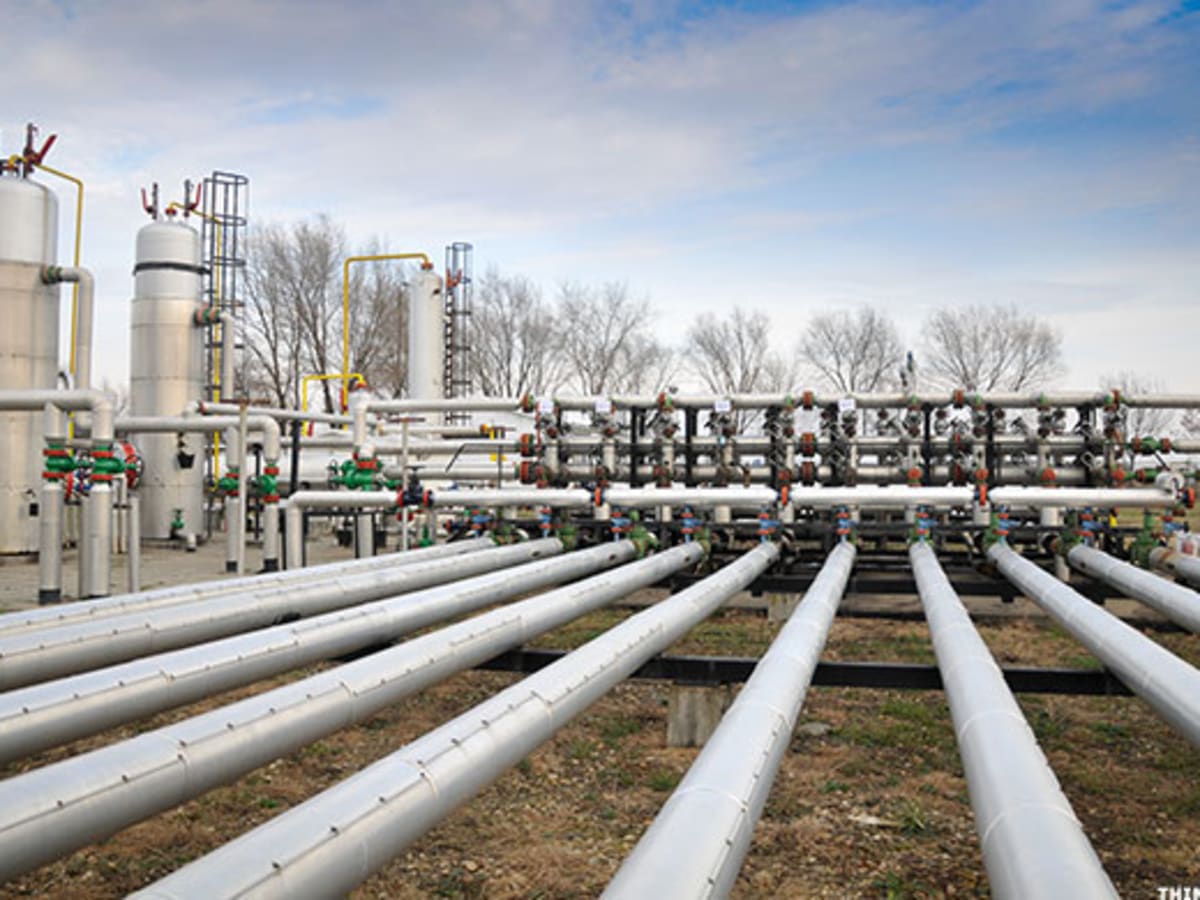Features
U.S. vs. Nigeria: Pipeline expansion and gas markets

Earlier this week, TopNaija spotlighted the groundbreaking expansion of the Permian Basin’s pipeline network, a significant development poised to reshape the global energy landscape.
As the ripple effects of this expansion begin to unfold, we now look closer at the opportunities it presents for Nigeria, exploring key lessons that could propel the nation’s energy sector forward.
This detailed analysis aims to guide Nigeria in enhancing its gas infrastructure, ensuring the country not only retains its prominent position in the oil sector but also adapts to global energy trends.
The Permian Basin in the United States is experiencing a significant expansion in natural gas pipeline capacity, aimed at addressing challenges associated with rapid production growth. The upcoming launch of the Matterhorn Express Pipeline, with a capacity of 2.5 billion cubic feet per day (Bcf/d), is a key development in this effort.
This gas pipeline expansion, developed by a joint venture involving EnLink Midstream, Whitewater, Devon Energy, and MPLX, will transport gas from the Permian Basin to Katy, near Houston, Texas. The increased capacity is expected to alleviate the bottleneck issues that have led to severely depressed gas prices at the Waha Hub, where prices have often been negative in 2024.
In addition to the Matterhorn Express Pipeline, several other major projects are underway, including the Apex Pipeline (2.0 Bcf/d), Blackcomb Pipeline (2.5 Bcf/d), and Saguaro Connector Pipeline (2.8 Bcf/d). Collectively, these projects are set to add 7.3 Bcf/d of capacity by 2027.
Moreover, pipeline operators have announced additional projects with a total capacity of 7.0 Bcf/d, potentially coming online between 2025 and 2028. These expansions are crucial for connecting the Permian Basin’s growing gas output to demand centres in Texas and Mexico, thus stabilizing regional prices and supporting sustainable production growth.
Nigeria’s Natural Gas Infrastructure and Development
Nigeria, one of Africa’s largest producers of natural gas, has long struggled with underdeveloped pipeline infrastructure, which has hindered the effective transportation and utilization of its vast natural gas resources.
Unlike the Permian Basin, where pipeline capacity is being expanded rapidly to match production growth, Nigeria faces significant challenges in both the development and maintenance of its natural gas infrastructure.
Key Comparisons:
1. Infrastructure Development:
Permian Basin: The Permian Basin has seen proactive infrastructure development, with substantial investments in expanding pipeline capacity to match the rapid growth in natural gas production. The upcoming pipelines, including the Matterhorn Express, are part of a strategic effort to ensure that gas production does not outstrip the available transport capacity, which could lead to price collapses and production inefficiencies.
Nigeria: In contrast, Nigeria’s natural gas infrastructure is plagued by underinvestment, aging pipelines, and frequent vandalism. Projects like the Ajaokuta-Kaduna-Kano (AKK) pipeline are steps in the right direction, but they lag behind the pace needed to fully capitalize on Nigeria’s gas production potential. The country also faces logistical and security challenges that delay infrastructure development, leading to gas flaring and underutilization of gas resources.
2. Market Connectivity:
Permian Basin: The new pipelines in the Permian are designed to connect production areas to key demand centres, both domestically and internationally.
The ability to transport gas to the Gulf Coast and Mexican markets allows producers to tap into diverse markets, reducing the risk of price volatility and ensuring a steady demand for natural gas.
Nigeria: Nigeria’s market connectivity is limited, with most of its gas exported as LNG, while domestic gas utilization is hampered by inadequate pipeline networks.
The domestic market, including the power sector, struggles with inconsistent gas supply due to infrastructural bottlenecks. Nigeria’s efforts to expand its domestic gas market through initiatives like the National Gas Expansion Programme (NGEP) are still in nascent stages and face significant hurdles.
3. Pricing Dynamics:
Permian Basin: The Permian Basin has experienced extreme price fluctuations, particularly at the Waha Hub, where prices have dipped into negative territory due to pipeline constraints.
However, the proactive expansion of pipeline capacity is expected to stabilize prices by alleviating bottlenecks and better aligning supply with demand.
Nigeria: Nigerian gas prices are influenced by different factors, including government-regulated pricing for domestic supply, limited market access, and export prices linked to international LNG markets. The lack of infrastructure leads to gas flaring and underutilization, which affects the overall economics of gas production.
Unlike the Permian, where infrastructure expansion is driven by market needs, Nigeria’s pricing dynamics are more complex and less responsive to market signals due to infrastructural and regulatory challenges.
4. Investment Climate:
Permian Basin: The U.S. oil and gas industry benefits from a favourable investment climate, with clear regulatory frameworks and strong investor confidence. The rapid infrastructure expansion in the Permian Basin reflects the availability of capital and the presence of well-established companies willing to invest in long-term projects.
Nigeria: Nigeria faces a more challenging investment climate, characterized by regulatory uncertainties, security risks, and a volatile economic environment. While the Petroleum Industry Act (PIA) is a step towards improving the regulatory framework, attracting sufficient investment for large-scale infrastructure projects remains a significant challenge.
5. Environmental Impact:
Permian Basin: The Permian Basin’s gas pipeline expansion is partly driven by the need to reduce flaring and methane emissions, as excess gas is transported rather than burned off. This reflects growing environmental concerns and regulatory pressure in the U.S. to minimize the environmental footprint of oil and gas production.
Nigeria: Nigeria has one of the highest levels of gas flaring globally, a practice that not only wastes valuable resources but also contributes to environmental degradation. The lack of adequate pipeline infrastructure exacerbates this problem, as producers have limited options for transporting associated gas. Efforts to reduce flaring and increase gas utilization are ongoing, but progress is slow.
Conclusion:
While both the Permian Basin and Nigeria are significant players in the global natural gas market, their approaches to infrastructure development, market connectivity, and pricing dynamics differ markedly.
The Permian Basin benefits from proactive infrastructure investment and a favourable regulatory environment, allowing it to adapt quickly to production growth. In contrast, Nigeria faces more significant challenges in developing its natural gas infrastructure, which limits its ability to fully capitalize on its resources.
Addressing these challenges will require sustained investment, regulatory reforms, and enhanced security measures to attract both domestic and international stakeholders.
















